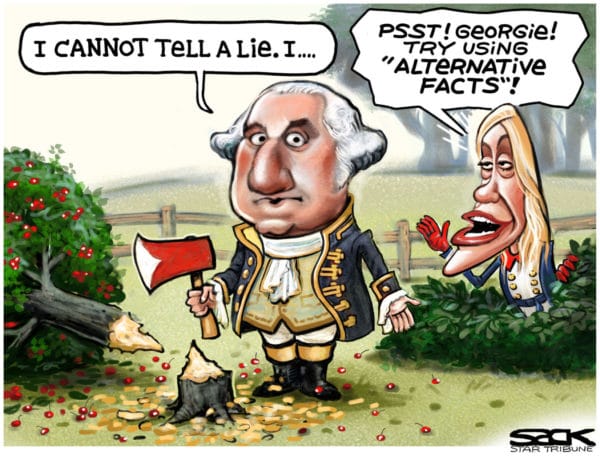I like facts. I like opinions. But the most important thing about facts and opinions is the ability to distinguish between the two.
This does not seem controversial.
Except maybe it is. Many people are not able to tell the difference between a fact and an opinion. And, many others just insist that their opinions are actually facts- or alternative facts as some like to call them.
So, now we have alternative facts and fake news. Increasingly, we find ourselves living in a “post-truth world.”
In the post-truth world, everyone has the right to believe whatever facts that they find convenient to support whatever opinion that they adopted before they have collected any facts at all.
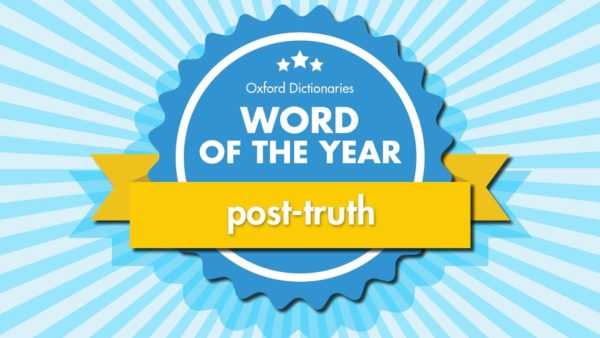
And, to the dismay of all the old people who like to blame every problem in society on the youth, they cannot do it with this one. Young people are not to blame. Old people are.
The Baby Boomers and the Origins of Fake News
“Don’t trust anyone over 30.”
–Jack Weinberg, New Left activist and founder of the Free Speech Movement at UC-Berkeley, 1965
Popular mythology tells us that Weinberg’s statement embodied the attitude of young people in the 1960s. And, the 1960s certainly offered reasons to distrust the powers that be. The Vietnam War, the assassinations of John and Robert Kennedy and Martin Luther King, race riots across the country, and the Nixon presidency were just a few of the notable events that might have contributed to a disillusioned youth.
Yet, even though the free-love, sex, drugs, and rock and roll, hippie stereotype dominates our perception of young people in the 1960s, it is not clear that most embraced this lifestyle. The election of 1972 was the first after the 26th Amendment guaranteed the right to vote to all 18 years old citizens. Most of those between the ages of 18 and 29 voted for Richard Nixon, the Republican “law and order” candidate.
Everybody Has a Right to Their Opinion
This seemingly trivial detail provides some insight into why young people today, unlike the youth of 50 years ago, really ought to distrust people over 30.
Young people should question their elders mainly because millennials are better able than older generations to distinguish facts from opinions. And, older generations, particularly those who were young in the 1960s, also happen to be the ones who are most likely to believe that their opinions are factual just because they believe them.
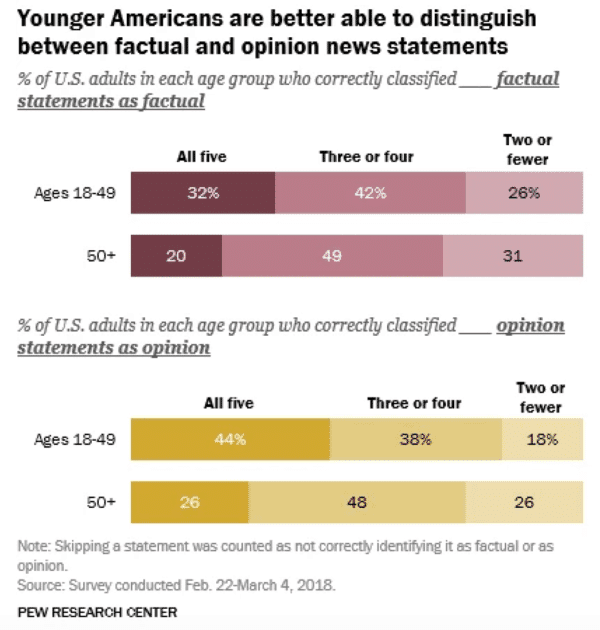
Young people, however, are more likely to recognize that facts and feelings do not always align. They understand that opinions should change if new factual information demonstrates that their opinions are wrong.

Older people tend to reject this way of thinking, seemingly as a matter of principle. As children of the 1960s, baby boomers learned that everyone had a right to their own opinion.
The boomers have stretched that concept to its limit in recent decades. Now, many believe that everyone has a right to consider their opinion to be a fact. Some even seem to think that it doesn’t matter if their opinion is factually correct or supported by facts because they have a right to believe it anyway.
Donald Trump’s War on Facts
Everyone is entitled to his own opinion, but not his own facts.
Donald Trump embodies the 21st-century ethos of fact entitlement. Most people believe that politicians are all liars. And, most are to some degree. But, Trump is in a league of his own when it comes to making statements that are not true.
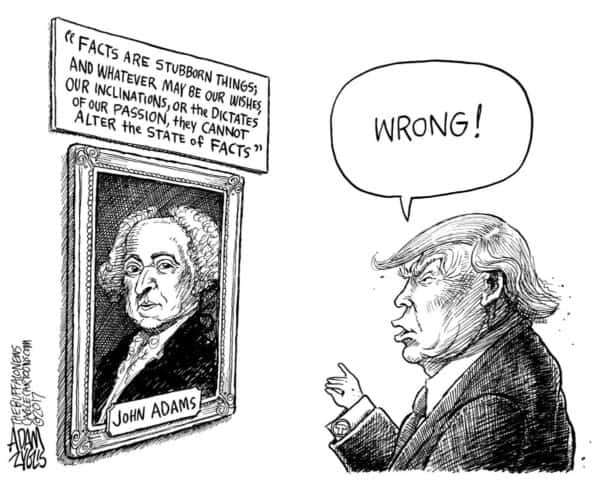
The fact that he so frequently misrepresents the truth does not seem to bother his supporters too much. Around 85% of Republicans approve of Trump. While most Americans do not think that he is honest, almost 70% of Republicans believe that he is.
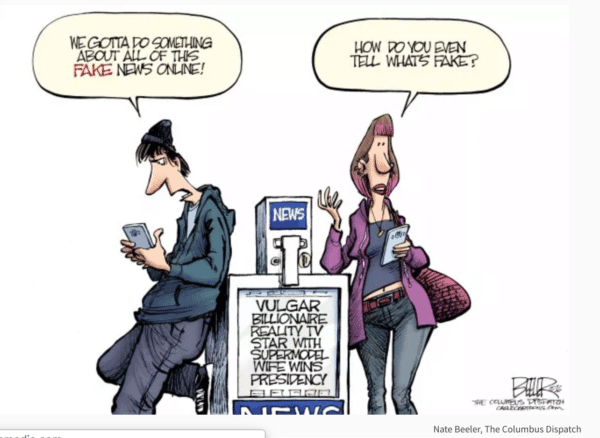
A big part of the reason his supporters don’t seem to care is that many of them lack the ability to distinguish between facts and opinions.
The Pew Research Center Study on Facts and Opinions
The Pew Research Center conducted a study earlier this year exploring this problem. Pew gave people a series of 10 statements and asked them to classify each statement as either factual or opinion. A factual statement is one that can be demonstrated to be true or false. All of the factual statements in Pew’s study were true. Opinion statements are subjective and cannot be demonstrated to be true or false.
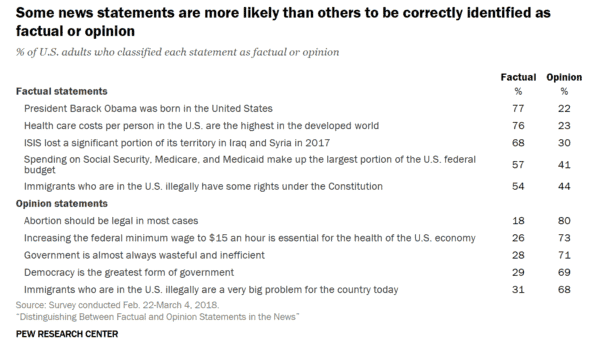
The majority of people were able to accurately label most statements, but the percentage who did so varied. Statements related to immigration challenged responders the most. Just over half knew that the illegal immigrants have some rights under the Constitution. Almost 1/3 believed that a statement identifying illegal immigrants as “a very big problem” was factual.
Because the Constitution specifically guarantees some rights to all “persons” and not just citizens, illegal immigrants do have some rights. And, perceptions of what constitutes a “very big problem” will obviously vary from person to person.
Personally, I think people who cannot distinguish facts from opinions is a “very big problem” in this country. In my view, it is a “much bigger problem” than illegal immigrants. However, I do have the good sense to recognize that this is my opinion and is not a fact just because I believe it.

The Young and Educated Are Best Able to Separate Fact and Opinion
The Pew Research Center’s study identified a number of factors that affected a person’s chances of accurately classifying facts and opinions.
As we would expect, education matters. People with a college degree did better than those with only a high school diploma.
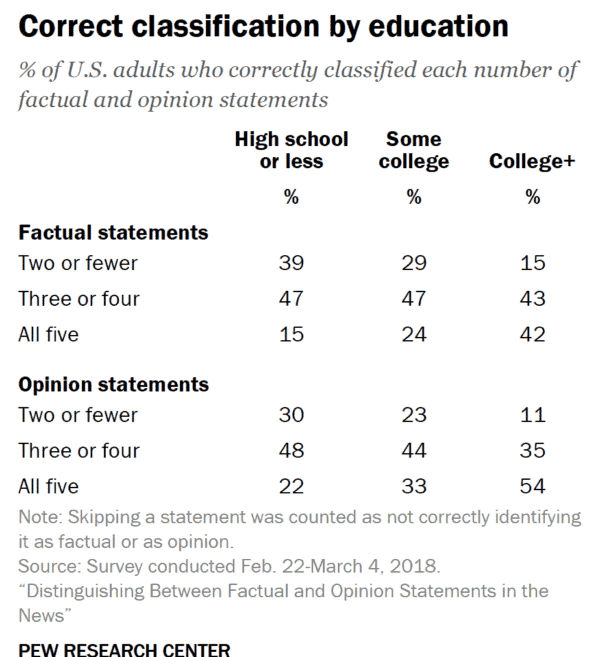
Age also affects the ability to accurately distinguish between facts and opinions. However, the relationship is not the one that most people would expect. Younger people were better able to distinguish between the two types of statements. In fact, the older a person is, the worse they are at distinguishing between facts and opinions.
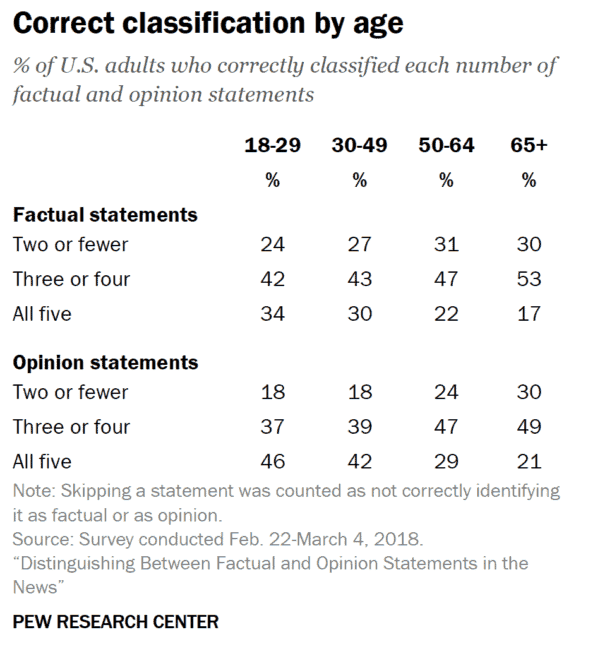
Why Do Younger People Better Distinguish Fact From Opinion?
The Pew study offers some insight into why millennials are better than baby boomers at distinguishing between facts and opinions.
First, younger people generally have more education than older Americans. They are more likely to have some college education. Their schools are also more likely to have taught them to distinguish between facts and opinions.
Schools only began to emphasize this skill over the past 20-30 years as the information age led to a more diverse array of sources available to students. For older generations, the only sources of information were the news, teachers, parents, and textbooks. Teachers and parents, in particular, influenced the information available to students. Students often accepted that the information they received from these authority figures was “true.”
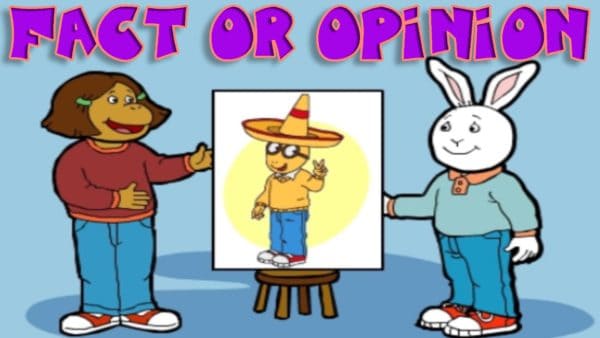
Younger Americans, particularly millennials who were born between 1981 and 1996, were in school at the dawn of the digital. They are more digitally savvy than their older counterparts. And, people who are more adept at using digital technology are generally better able to separate facts from opinions.

Perhaps because they are more digitally savvy, younger Americans are also more likely to trust news sources. Logically, a person who is confident in his or her ability to evaluate factual information will be less distrustful of that information. A person who lacks this confidence is likely to be more reliant on “trusted” sources.
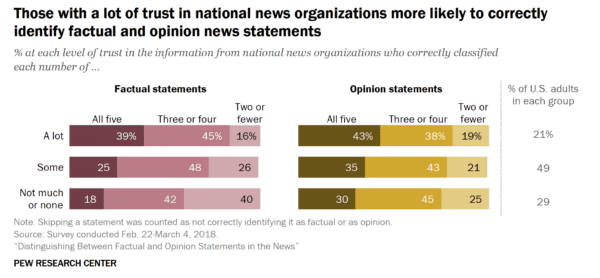
Ironically, older voters, who are more distrustful of the “liberal” and “mainstream media” are also more likely to be uninformed as a result.
People Don’t Like to be Wrong So They Argue with Facts
Psychologists have found that people really do not like to be wrong. They will seek out ways to avoid being wrong, even if means that they delude themselves in the process. Correcting them with factual information often makes them even more convinced that they are correct. Psychologists call this phenomenon “motivated reasoning.”
For example, almost 80% of Americans that the statement about Obama being born in the United States is a factual one. Yet, those that think it is an opinion overwhelming disagree with it. They could not have any factual information to support their opinion because there isn’t any. But, they believe it anyway.
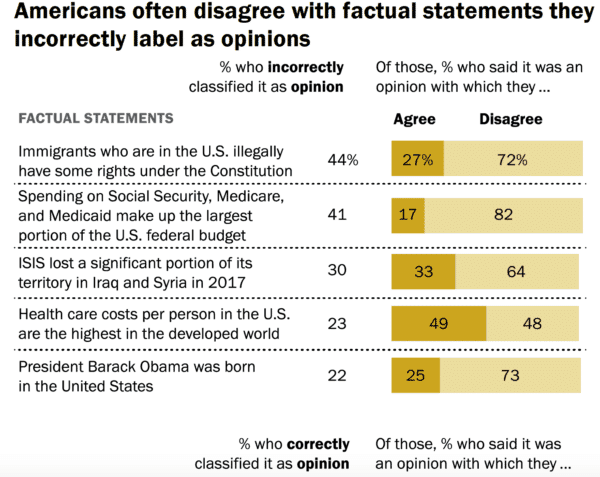
But, Barack Obama was either born in the United States or he was not. And, he was born in the United States. It is a fact. One does not have a right to have an opinion on the subject. Yet, many people, especially older Americans, choose to live in a world of alternative facts.

The Age of Alternative Facts
People with strong partisan views are more likely to struggle with the differences between facts and opinions. This is especially true when the party’s agenda conflicts with reality. Hence, we get “alternative facts.” If you do not like the facts and if they seem to suggest that your opinion is wrong, simply substitute in new “facts” that support your opinion.
Conservatives and older voters, in particular, seem to support this line of reasoning.
Of course, alternative facts obliterate the concept of facts. But, that does not really matter to the people using them. For extreme partisans, facts don’t matter. Having people believe that they are right is the only thing that matters. And, if people will believe the “alternative facts” that I fabricate to support my point, then I should invent whatever alternative facts that I can to gain their support.

Fake News and Conspiracy Theories
One reason that this works is that Americans have a tendency to believe rather bizarre conspiracy theories. This is not necessarily new. Political scientist Richard Hofstadter explored the problem in an important 1964 Harper’s Weekly essay, “The Paranoid Style in American Politics.”
And, the problem is still with us today. Indeed, the problem is probably getting worse.
University of Chicago political science professors Eric Oliver and Thomas Wood surveyed Americans to find out their views on a number of conspiracy theories. They published their findings in 2014.
“19% of Americans believed the U.S. government planned the 9/11 attacks to start a war in the Middle East, 24% believed former president Barack Obama was not born in the United States, and 25% believed Wall Street bankers conspired to cause the financial crisis that began in 2008.”
These numbers might seem low, but considering that there is no factual evidence to support any of these claims, it is shockingly high. This means that you can make up just about any story you would like and be confident that you can persuade 20-25% of the public to believe it.

Fake News and the 2016 Election
The 2016 presidential election really drove home how serious this problem had become. As the election approached, fake news stories increasingly outnumbered real ones.

I remember several arguments concerning the Khan family who chose to speak out against Trump at the Democratic Convention in July 2016. Their son was killed in Iraq. They felt that Trump’s comments about veterans and about Muslims denigrated his memory and sacrifice since he was both a veteran and a Muslim.
In response, someone (the Russians!) began posting stories on social media claiming that the Clinton campaign had paid the Khan family to attack Trump. The “stories” did not have any source attribution and included “documents” with all the information redacted. I tried to explain to those sharing them that this is not the way that real documents look. They responded that I did not believe the story because I was “biased.” Some even said that it did not matter if there were facts to support the story because they “knew” it was true.
This was just one of many “fake news” stories that took over social media in 2016. We now know that this fake news, planted by Russian agents, was intended to help elect Trump. The fake news shared on social media appears to have influenced the votes of at least some of the people who voted for him.

How to Combat “Fake News” and “Alternative Facts”
Fake news is a problem, but it does not have to be. News consumers can do a better job learning about their news sources.
Every consumer should ask two basic questions:
- Is the source biased in one direction or the other? Some partisan or ideological sources are better than others. People can still be informed even if they get their news from biased sources. But, it helps if they know that the sources have a political agenda. I usually deal with this by making sure that I have looked at sources with different political agendas when researching a topic. This obviously takes time and not everyone has that kind of time. But, everyone can at least be aware when their sources do have a bias and adjust their acceptance of it accordingly.
- Is the source more focused on presenting factual information or editorializing- offering opinions- about news stories? Much of the programming on Fox News and MSNBC, for example, do not even attempt to focus on facts. People watching shows on these networks often become less informed because they repeatedly hear information that is not true. If we want to live in a “fact-based reality”- and we should, we need to start consuming “fact-based news.”
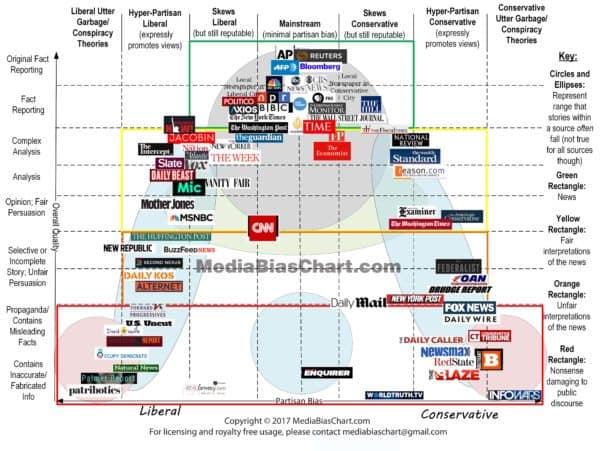
One major reason young people do this better than older people is that school curriculums focus on teaching students how to become better news consumers. Even though millennials use social media more than their elders, they are better at sorting out what is real and what is not. Consequently, they were less susceptible to being drawn in by fake news in 2016 than the baby boomers.
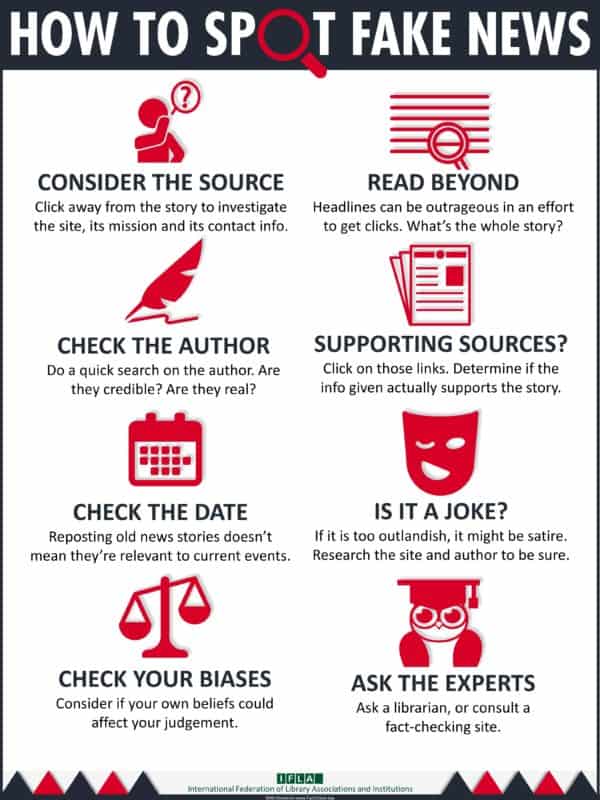
The Media is Not the Problem; We are the Problem
Perhaps we should mandate that older voters go back to school to learn to tell the difference between facts and opinions. Unfortunately, this is not really practical, especially considering that few of the people who need this education believe that they do. Nevertheless, it is fair to say that the blame for the spread of fake news ultimately falls on the person spreading it.
People like to blame the media for the problems facing our country, but the reality is that the real problem is the public consuming the news.
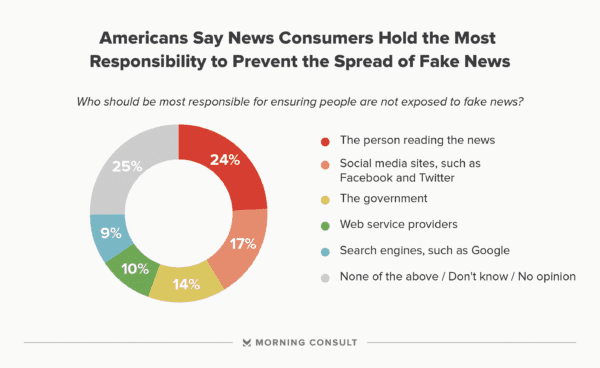
If we don’t want to be misinformed and exploited by the “fake news” media, we have to take responsibility for educating ourselves. We are fortunate that younger people seem to understand this better than their parents and grandparents.
We can only hope that younger people will start taking more responsibility in using their superior knowledge and education to offset the voices and votes of the uninformed. One reason we are in this mess we are in now is that younger people vote a lot less often than older people do. As a result, the most “reality-challenged” voters choose our political leaders and the “reality-based” voters are left with the consequences.
Look to the Young; They are the Future
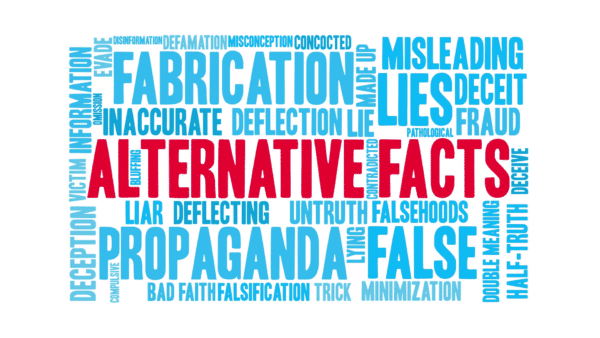
Alternative facts are not facts. They are lies. And, a world built on lies is not one that can be sustained for long. We will either become a “fact-based” society or we will crumble under the weight of fake news.
“Unlike some, I actually try to state facts. I believe in facts. I believe in a fact-based reality, and a fact-based politics.”
Barack Obama, October 23, 2018
Younger voters like Barack Obama a lot better than they like Donald Trump. Obama’s preference for facts and Trump’s dismissal of them is a big part of the reason.
The country will survive 4 years of Trump- and probably 8 years if we cannot muster the good sense to end this misery in 2020. But, it is not realistic to think that any country will survive over the long-term when so many people believe things that are not true.
Facts matter. Hopefully, the baby boomers will start taking some cues from the millennials sooner rather than later. We might be entitled to our own opinions, but we are not entitled to our own reality.
The real world exists whether we like it or not. Our odds of navigating through it are better when we understand what it is and how it works and don’t simply pretend that it is how we would like it to be.
